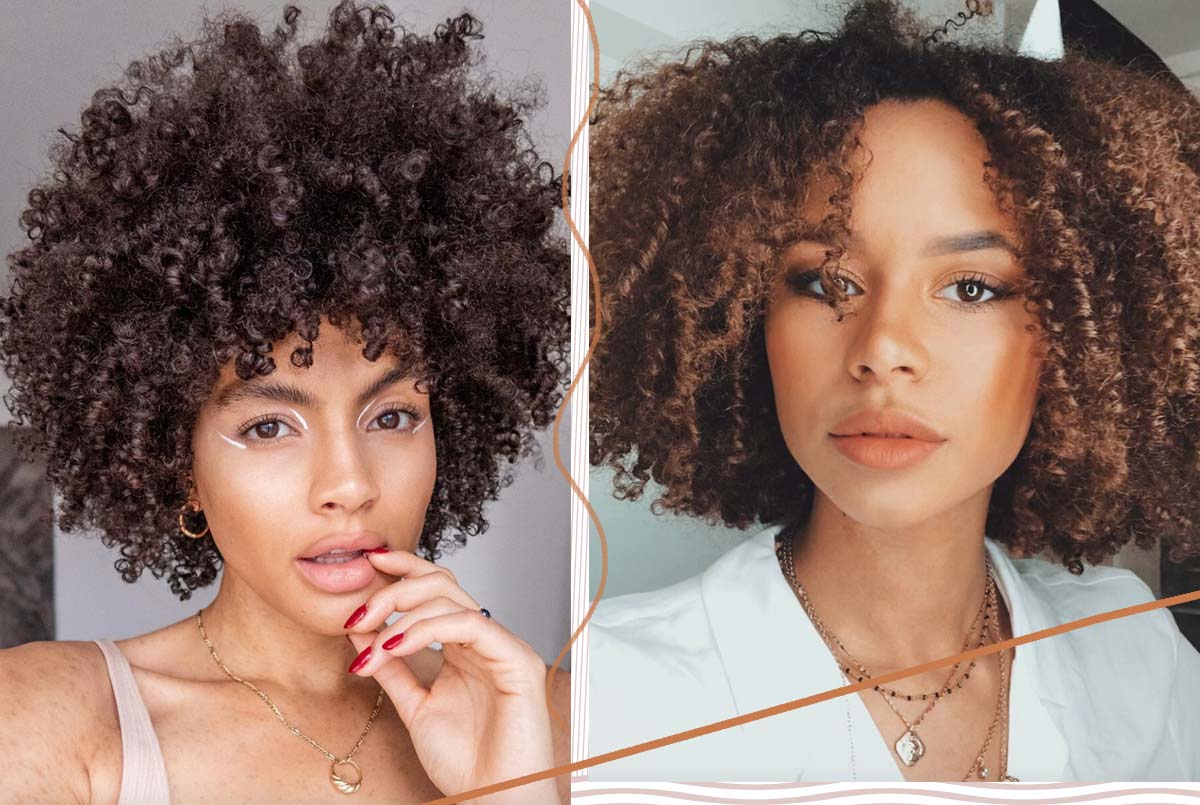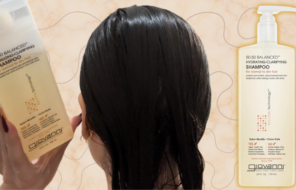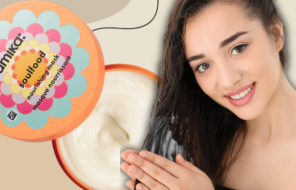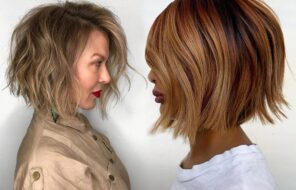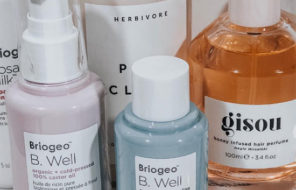When you have curly hair, it can feel like most hair care products aren’t made for you and that your hair is a rare breed that needs to be tamed into submission. The reality is that this isn’t true. While curly hair can pose some unique challenges that aren’t always experienced by people with straight hair, there’s no reason to give up hope for having good hair days. And this is especially true when we’re discussing how to wash curly hair.
Good hair care begins by understanding your hair type, learning which hair concerns are most important for you, and identifying the products and ingredients that should be embraced and avoided. Washing your curly hair is the foundation for any good curly hair care routine.
So, before you go out and spend a ton of money on products that may or may not work for you, sit down and enjoy our crash course on understanding curly hair, how to wash it, and how to bring out the best in your hair.
In this article:
- Understanding Curl Type and Why It Matters
- Porosity and Density
- Speaking of Wash Frequency…
- Adjusting Your Wash Routine
- Preparing for Wash Day
- The Curly Girl Method
- The Wash Process
- Tips to Keep in Mind
Understanding Curl Type and Why It Matters
When we speak of curly hair, many people are surprised to find how large a category it can cover. Curls can range from soft waves to densely packed kinky coily curls with a wide range of textures and curl diameters in between them. But one thing that holds true for the entire curl range is that when you know your hair type, you can be more aware of the general concerns your hair type experiences and can better pick products and hair care techniques that will bring out the best in your hair.
But it’s important to keep in mind that hair type alone won’t be the cure-all for fixing any hair care woes that you have. Just because you have the same hair type as your favorite hair influencer doesn’t mean that completely copying their promoted routines will automatically work for you. So, how do you find your hair type?
Read Next: 31 Best Products for Curly Hair, from Shampoos to Curl Creams
Finding Your Hair Type
One of the most trusted hair type charts is the Andre Walker Typing System. This hairstylist to the stars, who counts Oprah as one of his clients, breaks down hair types into four main categories that include additional subcategories for Types 2 through 4.
- Type 1 is designated for straight hair and doesn’t contain any subcategories.
- Type 2 is for wavy hair and is further defined by 2A, 2B, and 2C.
- Three is for “traditional” corkscrew-style curls and is further divided into 3A, 3B, and 3C.
- And Type 4 is defined as tightly coiled curls that can range from miniature corkscrews to tighter zig-zag curl patterns with additional subcategories that include 4A, 4B, and 4C.
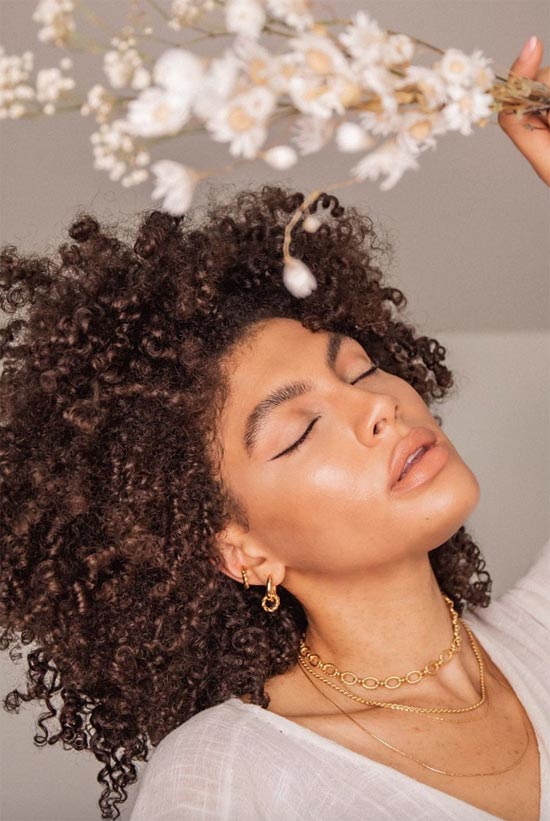
Why Hair Type Matters
As a general rule, curly hair tends to be drier than straight hair. And the curlier your hair type, the drier your hair tends to be. So, whereas someone with wavy Type 2A hair might only struggle with dryness occasionally, someone with 4C kinky curly hair that might not even have a distinguishable curl pattern may struggle with dryness daily. This is because the curlier your hair, the harder it is for natural oils produced by your scalp to travel down the hair shaft.
Extreme dryness can often result in dry, brittle hair that’s prone to breakage and split ends. And this means that when it comes time to wash your curly hair, you’ll need to prioritize products that reinfuse moisture and may even need to incorporate techniques that are gentler on your hair to minimize excess breakage. But hair type alone isn’t enough to pick the right products and methods for washing curly hair.
Porosity and Density
If you’re feeling overloaded, don’t worry! Curly hair does have unique characteristics that require you to tweak your wash routine, but once you learn the basics, it’s easy to continue doing.
Porosity and density are important to understand how easily your hair retains moisture and how many strands of hair you have on your scalp. Density or thickness can be hard to pinpoint since it’s nearly impossible to count hair strands but is usually measured in terms of how many strands are in a square inch on your scalp.
The Porosity Test
Porosity can be judged by one of two simple at-home tests. Hair porosity depends on how closely the cuticles on your hair shaft are overlapped. It’s often referenced as either low, normal, or high porosity.
To determine your hair’s porosity, blot-dry your hair after washing it. Feel the texture while it’s damp. If it feels rough, you have low-porosity hair. If it just feels wet, you have normal-porosity hair, and you don’t necessarily need to switch up your routine or hair care products. And if it feels sticky like it still has product in it, then you have high-porosity hair.
If judging by “hand feel” isn’t your strong suit, the second porosity test is easy to do. Get a glass of water and preferably pour it in a clear glass or cup. Take a strand of hair ideally after your hair has been recently cleaned and drop it into the water glass.
Look at the results, and depending on what you see, it’ll determine whether your curly hair has low, normal, or high porosity. Low-porosity hair will float. Normal-porosity hair will float initially and then sink. And high-porosity hair will sink immediately.
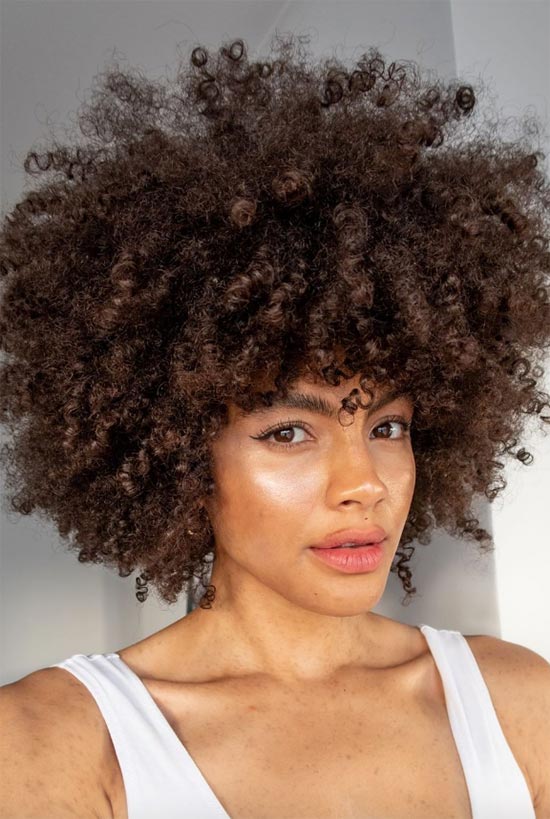
Why Porosity and Density Matter
People with high or low-porosity hair struggle with maintaining moisture, which means that they need to focus on hair care products, even during the washing process, to make sure that their hair gets the moisture it needs. Likewise, their wash routine might need to be edited to prevent further damaging their curly hair.
What to Know About High Porosity
High-porosity hair is often associated with damaged hair, although some people have naturally high-porosity hair. When high porosity is caused by damage, common culprits can range from chemical processing such as bleaching or relaxing hair to environmental damage like swimming in chlorinated water.
Whatever the reason, a hallmark of high-porosity hair is when washing curly hair, the cuticles on the hair shaft remain open, allowing too much moisture to enter. Frizziness and tangling when it’s humid are also signs of high-porosity hair.
Read Next: 19 Best Shampoos for Curly Hair
If your hair has high porosity, you need to focus on moisture-rich products. Specifically, leave-in conditioners immediately after washing your hair or deep conditioning treatments can help to infuse moisture and fight frizz or tangles.
High-porosity hair also benefits from an oil-based pre-poo to help prep the hair to retain moisture. Likewise, opting for a non-sulfate shampoo is also a good idea.
High-porosity hair tends to coincide with damaged hair from chemical treatments, coloring, or even excessive sun exposure. So, you want to avoid shampoos with harsh cleansers that can further leave hair weak and susceptible to additional damage.
What to Know About Low Porosity
Unlike high-porosity hair, low-porosity hair features cuticles that are very tightly overlapped to the point that they lay flat. While it’s usually associated with healthy hair, low-porosity hair has a hard time allowing moisture to enter the hair shaft.
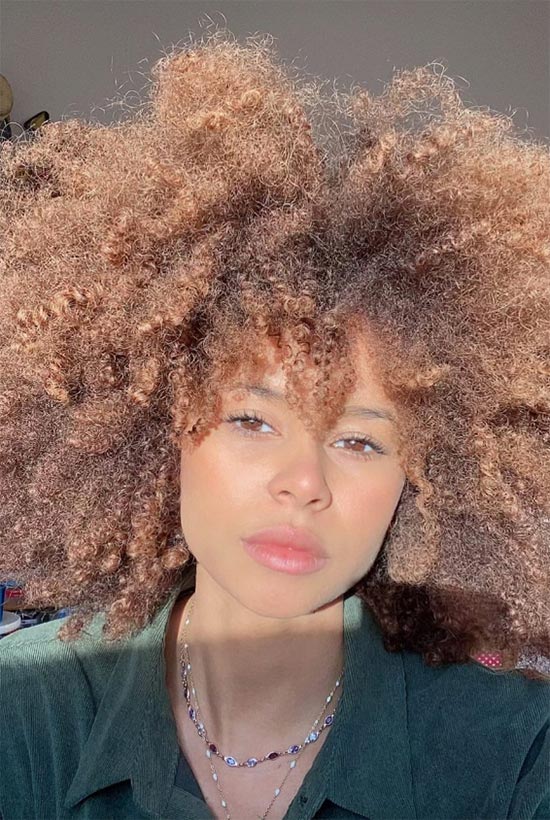
Key issues people with low-porosity curly hair may struggle with include product build-up, so you’ll want to prioritize clarifying steps to thoroughly cleanse your strands and scalp. As a result, people with low-porosity hair should avoid protein-rich deep conditioners since these can lead to product build-up and cause their hair to become stiff.
Likewise, avoid frequent use of leave-in conditioners since these can also add to stiffness. Experts recommend that protein-free conditioners that contain natural humectants like honey or glycerin are better bets.
Because low-porosity hair has cuticles that are tightly closed along the shaft, adding moisture can be difficult. Stylists recommend that low-porosity hair can benefit from an oil-based pre-poo step that incorporates moisture such as avocado oil. Pre-pooing helps to prep the hair so that when it encounters water, it’s able to effectively absorb and retain the moisture it needs.
And for Those with Hybrid Porosity
As if that wasn’t enough, some people have hybrid porosity, meaning they have both low and high porosity throughout their curly hair. Sometimes this is caused by damage to the hair, such as over-processing during bleaching or relaxing hair. But other culprits can include sun damage, or even gray hair growth can have a different porosity to the rest of a person’s hair.
If you have hybrid-porosity curly hair, then you might want to incorporate steaming into your wash day routine to help fully open up the hair cuticles before you start the conditioner step.
Another smart tip includes using a heat cap to help open the cuticles while deep conditioning your hair. Also, focus on working conditioner into your ends – the part of hair for all hair types that tend to be the driest. But most experts recommend that having hybrid-porosity doesn’t require doubling up on shampoos, conditioners, or other hair care products.
Speaking of Wash Frequency…
Wash frequency, or how often you wash your curly hair, is also not a one-size-fits-all concept. Some people can get away with washing their curly hair daily, while others may need to scale back to prevent over-washing or stripping their hair of moisture.
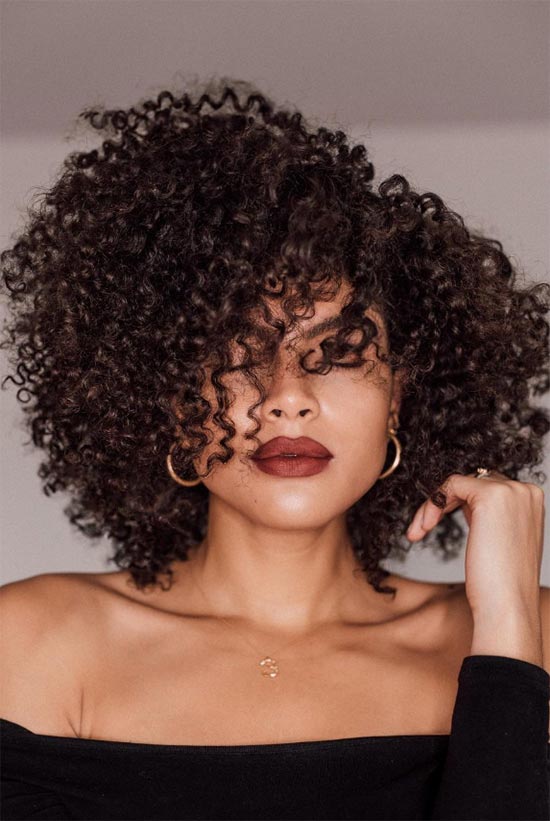
Depending on your hair type, and if you have concerns about dryness or fine strands, you might not need to wash your hair every day. This is going to depend on your hair’s composition and any issues you’re experiencing, as there’s no de facto rule that all kinky coily hair types should wash less frequently, and all wavy hair types should wash daily.
Likewise, lifestyle changes like increased exercise routines may call for more frequent washing.
However, if you struggle with dryness, reducing your wash frequency from every day to maybe twice or three times a week might be a good idea. This, of course, goes along with picking the right wash and styling products for your hair type and porosity level to help maintain moisture between wash days.
But if you’re not entirely sure about which frequency is right for you, the general recommendation is that people with curly hair types shouldn’t wash their hair more than two to three times a week. Start with this goal in mind and, depending on how your hair responds, either maintain it or increase or reduce how often you wash your hair each week.
Adjusting Your Wash Routine
This is another step where you need to be prepared for a bit of trial and error. Like we’ve mentioned several times, there’s no magic product or routine that will solve every problem every person with curly hair faces. While you should focus on products designed with your curl type in mind, you also need to be mindful of porosity.
Read Next: 25 Best Hair Detanglers for Knot-Free, Smooth Hair
If you haven’t done the porosity test, make sure you do one the next time you wash your hair, and then shop for products that are designed to address whatever issue your hair is facing.
But also, don’t forget that if you’ve chemically treated or colored your hair, those are also factors that should weigh heavily in your decision process as you shop for shampoo and conditioner. The last thing you want if you color your hair is to pick a product that’s known to fade hair colors.
Preparing for Wash Day
Washing curly hair doesn’t have to be an all-day affair, even if you’re part of the natural community. But there are some techniques and tips that can make your wash day easier.
Keep in mind that you might need to perform a bit of trial and error to find the right routine and product line up that works for your hair type and porosity level. We’re sharing all the steps that can go into washing curly hair, but some of them are optional.
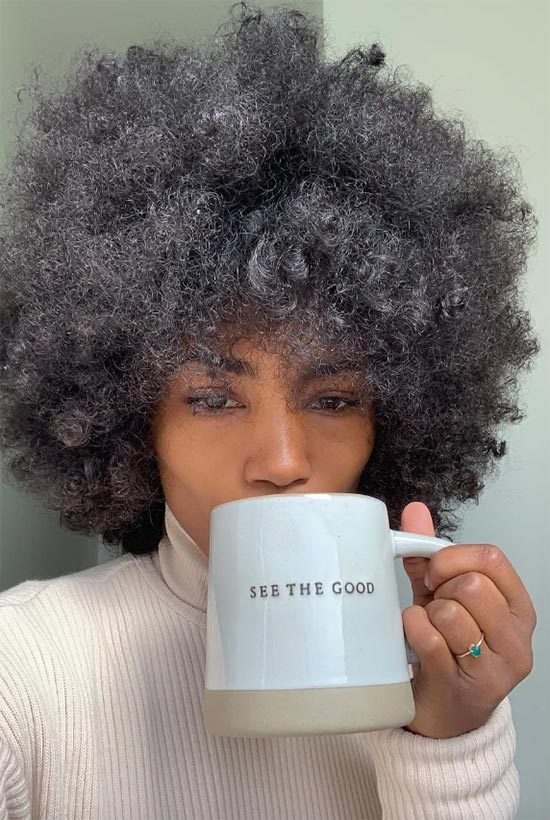
Start with Detangling
Tangles can happen to anyone, but curly hair is more likely to be anywhere from a little to extremely tangled, depending on your hair type, how frequently you use styling tools, or even if you’re in the process of taking down a protective style like braids. No de facto rule says you have to detangle your hair before you hop in the shower to wash your curly hair.
For people who are Type 2, they might not need to manage detangling as a separate step.
In contrast, people with tighter curl patterns or those removing extensions should remove tangles first to avoid unintended knotting when you start the cleansing step for washing your hair.
When detangling your hair, always work with curly hair when it’s damp or wet. Even though your hair is technically more fragile when it’s wet, it also has more elasticity. This means that it’s easier to gently work through knots. Detangling dry hair is a recipe for disaster that can encourage breakage and split ends.
If tangles are mild, you can simply spritz your hair with water and then use your preferred wide-tooth comb or detangling brush. Some people can finger detangle without a brush or comb, but this is going to depend on your willingness to be patient as you work through your hair.
For serious knots, make sure the hair is fully saturated with water and a detangling solution to give you extra slip as you work through knots. If you’re not sure which detangler is best for you, just create a one-to-one mix of conditioner and water and put it in a spray or squeeze bottle.
Work through your hair in sections that are manageable enough for a brush or comb to work through the length effectively. Begin at the ends and slowly work up towards your roots to prevent unnecessary pulling on your hair.
To Pre-Poo or Not
Pre-pooing – or the act of applying some type of treatment to your hair before you begin washing your hair – isn’t a required step, but it can be helpful if you’re trying to focus on cleansing the scalp, effectively lifting dirt, infusing moisture, or even avoiding removing too much sebum or healthy oils from your scalp or hair.
There is a wide range of pre-poo options out there, but some of the most popular include apple cider vinegar, mud washes, and oil treatments.
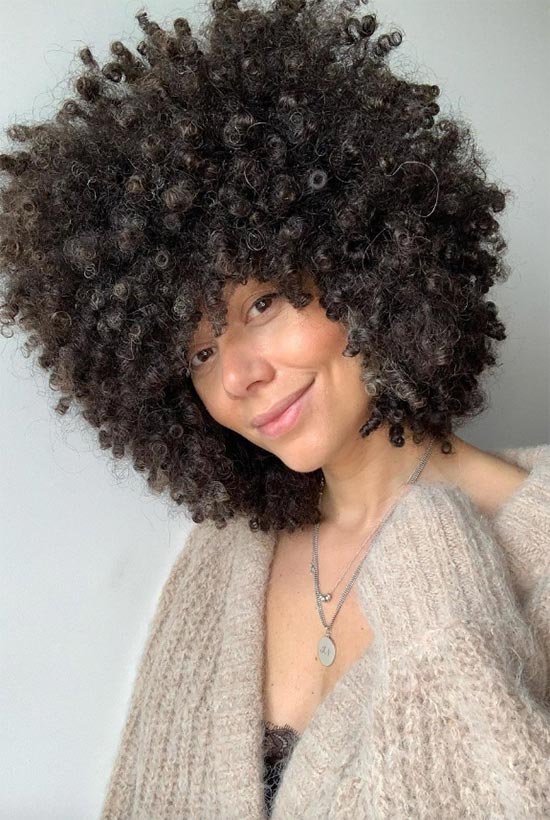
Pre-pooing usually takes place before you get in the shower and is a pre-cleansing step. The process is very easy and simply requires using a spray or squirt bottle to concentrate your preferred pre-cleansing choice directly on the scalp.
Using the pads of your fingers, gently work the solution into your scalp to agitate dirt. This step is especially effective as a clarifying solution for people who opt for the Curly Girl Method where shampooing is forbidden, and product build-up on the scalp and hair can be a concern.
Make Wash Day Manageable
Curly hair can be voluminous, meaning that thoroughly washing every section can be difficult if you attempt to tackle your hair like someone with straight hair would do. Many curlies recommend sectioning the hair into more manageable portions. This ensures that all of your hair is effectively detangled, cleansed, and shampooed with no strands left behind.
To keep the sections controlled, use banana or duck clips to hold sections in place as you effectively detangle, cleanse, and condition through each part of your hair. This tip can be especially effective for people with very curly hair where attempting a “whole head” approach can leave patches of hair accidentally ignored.
The Curly Girl Method
Not everyone wants to use the Curly Girl Method – especially if you struggle with build-up. But it deserves to be mentioned because it’s incredibly popular as a method for washing curly hair, and many curlies rave over the long-term results.
What Is the Curly Girl Method?
In short, the Curly Girl Method (CGM) is a range of hair care steps that is designed to bring out the best in curly hair. As it relates to washing curly hair, the main focus is on avoiding using shampoo to cleanse the hair because many shampoos contain harsh ingredients that can strip hair of essential oils and leave it more prone to damage.
Specifically, someone who follows CGM should – along with skipping shampoo – avoid products that contain:
- Sulfates
- Silicones
- Mineral oils
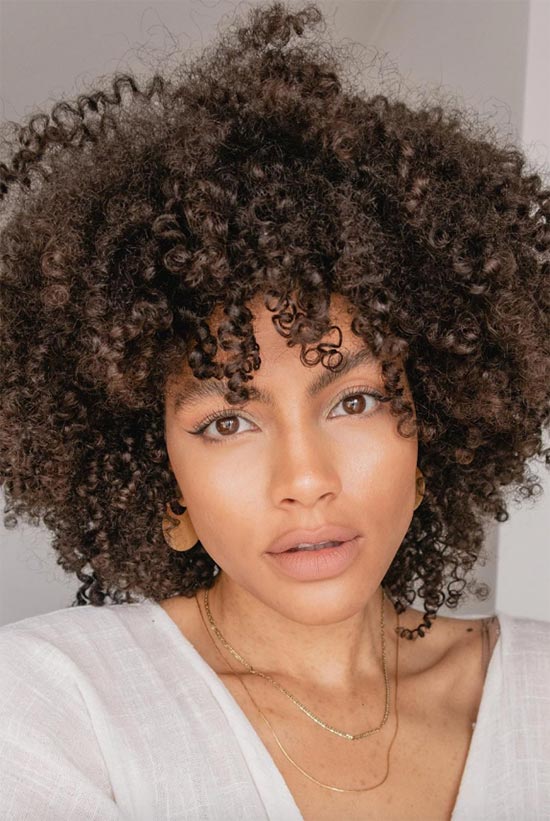
Instead of shampoo, you wash curly hair with either a low-poo shampoo that doesn’t contain harsh ingredients or a co-washing conditioner to gently remove dirt and product build-up without stripping the hair. Depending on the types of products you use regularly and your wash frequency, you’ll need to decide which option is best for your hair type.
Does the Curly Girl Method Work for All Curlies?
Not necessarily. Some hair care experts believe that CGM is only useful for people from Type 2A to 4A, meaning very kinky coily 4B and 4C heads might not necessarily get the full benefits since the method is designed for naturally enhancing curl patterns, and the upper Type 4s usually require additional styling to achieve curl definition.
However, there are plenty of people who are 4B and 4C who swear by CGM, so you might want to do some trial and error if you fall into that category.
Things to Know…
The CGM is incredibly beneficial for many people with curly hair, but if you dig into the curl community, you’ll find that application methods and strategies vary widely. While hardcore fans follow the idea of only cleansing once a week, some people should wash more frequently.
Depending on the number of styling products you use, how much oil your scalp naturally creates, and your schedule, you may find that trying to stretch out a week or more between wash days might not work for you.
Also, transitioning into CGM takes time, as many people note that it can take as much as four to six weeks to find a curly hair wash routine and product lineup that works for them. No one magic shampoo or conditioner works for every hair type, porosity level, or corrects damage in everyone.
However, we definitely recommend that if you solely use a conditioner to wash your curly hair that you focus on incorporating a great clarifying pre-poo step, such as cleansing your scalp and strands with apple cider vinegar before washing your hair to properly agitate any dirt or oils, so that they’ll wash out with a conditioner.
If you fail to properly remove dirt and grime from your hair, you can encourage other hair care woes like flaking and product build-up. All of that translates to curls that just don’t pop and require more effort to style.
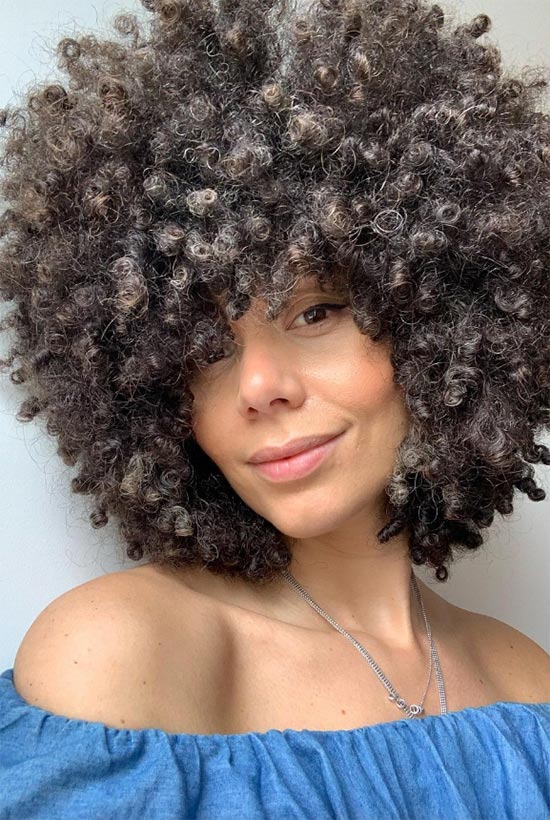
The Wash Process
Along with picking the right products, technique matters too. Keep in mind, you’ll need to tweak some aspects of a curly hair wash routine so that it makes sense for your strands.
The Cleansing Step
When you have curly hair, you can’t tackle wash day the same way someone with straight hair would do. Depending on how curly your hair is, you’ll need to completely adjust your hair washing routine so that you’re not encouraging frizz or tangles.
For example, you’re not going to want to vigorously create suds during the shampoo step by roughly working through your hair and scalp. Instead, work through the length of your hair by gently massaging it rather than scrubbing roughly at it.
You may also find that you need more product than the packaging recommends. Depending on the length of your hair, apply as much curly hair shampoo, cleanser, or co-wash as necessary to the roots of your hair and work it into your strands as you go down the length of your hair.
Experts recommend spending at least 60 seconds working product into your roots to make sure that your scalp and roots are thoroughly cleansed. But use the pads of your fingers so that you’re being gentle.
Gently massage the hair as you move down your length. Depending on the shampoo, you may or may not experience the stereotypical sudsing effect. For example, cleansers and co-washes that are promoted as sulfate- or EDTA-free (the main ingredient that causes lathering) won’t create soap suds.
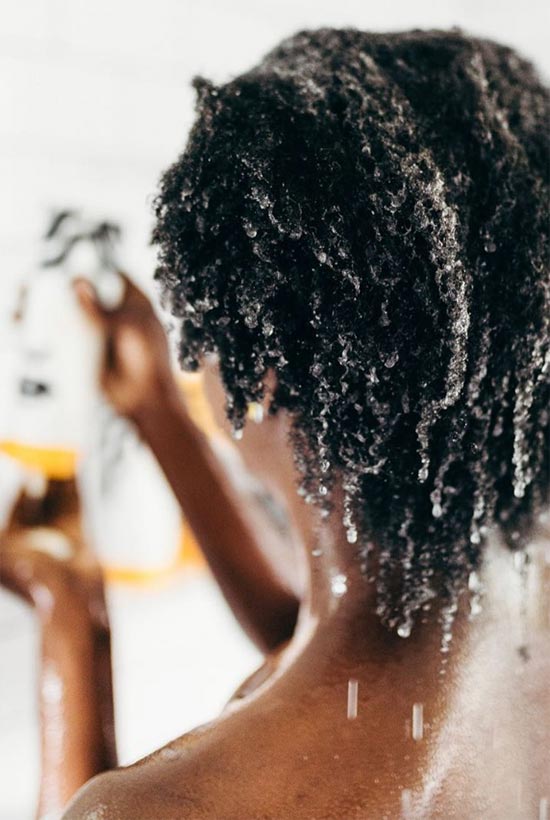
Also, don’t use the hottest water temperature, as this can contribute to dryness. Instead, when it’s time to wash your hair, bring the temperature down to a warm level that’s comfortable but isn’t steaming hot. This helps the hair shaft open so that moisture can penetrate it.
Some people will say that you should opt for two cleansing rounds, starting with a clarifying shampoo and then following with a moisturizing shampoo. But this is going to depend on how your hair performs or any specific issues you’re attempting to tackle.
While people with a serious product and dirt build-up may benefit from a clarifying step, someone who washes more frequently or doesn’t struggle with stubborn build-up may not need it.
Prioritize the Conditioner Step
Curly hair is more prone to damage because it easily becomes dry, which can lead to breakage. So, the conditioner step is just as important as picking the right curly hair shampoo. Just like with shampoos, you’ll want to prioritize options that are paraben+ and sulfate-free and also focus on hydration.
Conditioner placement should focus on your actual hair rather than on the scalp. You can moisturize your scalp in an immediate post-wash step instead. Ideally, let the conditioner sit for five to 10 minutes or whatever time range is listed on the product directions. Then rinse your hair with cool water to help close the hair shaft and trap moisture.
Deep Conditioning
For hair that’s damaged or where you’re trying to infuse moisture and softening, a deep conditioner step is a great idea. Just remember that you need to adjust your deep conditioner of choice, depending on your hair’s porosity. People with low porosity should avoid protein-heavy deep conditioners since it could leave hair feeling drier.
But depending on your hair type, you’ll need to adjust your application approach. For example, looser curl types can focus conditioning on the mid-length and ends. In contrast, kinky coily types should apply a deep conditioner throughout the entire hair length.
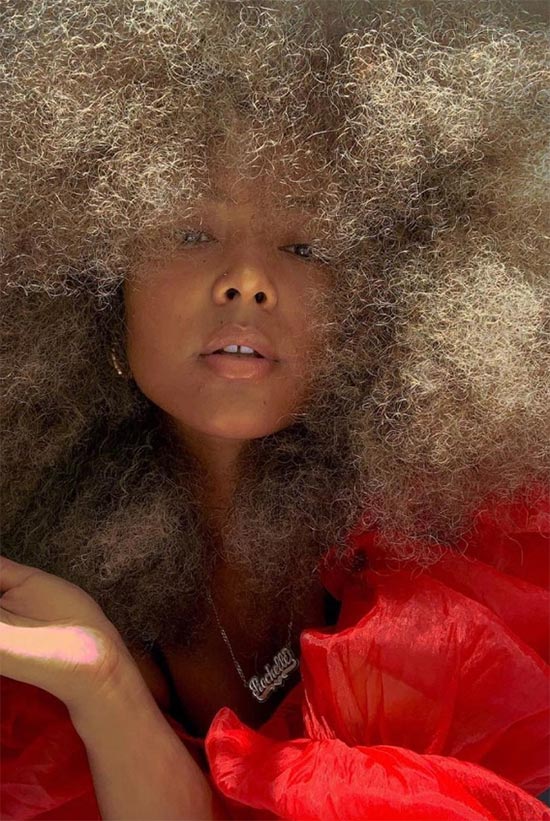
To deep condition your hair, apply your conditioner throughout the hair, and then either with your hands or a wide-tooth comb, make sure that it’s been evenly distributed through your hair.
Depending on the product, you may need to wait anywhere from two to 15 minutes before rinsing it out. For a truly intensive deep conditioning experience, add a bit of heat either by wearing a processing cap or covering your hair in a plastic bag to capture the heat from your scalp and help the product work through your hair.
Deep Conditioner as a Leave-in
This is an optional step, but leaving a little conditioner in your hair instead of fully washing it out can serve as a quick leave-in solution. Leaving a little conditioner in your hair can improve manageability.
To do this, you don’t want to leave a large amount of conditioner in your hair. Instead, rinse it out so that the hair has a bit of slip to signal that there’s still conditioner in your hair. But you can also find stand-alone leave-in conditioners that are intended to be applied immediately after you finish washing your hair.
Time to Dry
First things first, ditch the terry cloth towel. Instead, at a minimum, you should use a microfiber towel. Microfiber is gentler on curls and helps blot excess water without damaging your hair. But some people prefer to use a jersey knit T-shirt (an old one is fine!) to gently dry curls.
If you’re following a strict CGM or no-heat regimen, you’re going to opt for air-drying your hair. So, avoid using a blow dryer – even with a diffuser attachment – as heat damage is going to be a primary concern.
While your hair is damp, this is the time to add any styling products. This is because many curly hair products are designed to be applied to damp hair.
Depending on your goals, some naturals prefer to stretch the hair using no heat methods such as twisting, braiding, or banding the hair and letting it air-dry. For people that want to rely on a blow dryer, a heat protectant and investing in a good diffuser are essential. Heat protectant ensures that hot styling tools won’t damage your hair, while a diffuser prevents frizz by keeping airflow from disturbing your curl pattern.
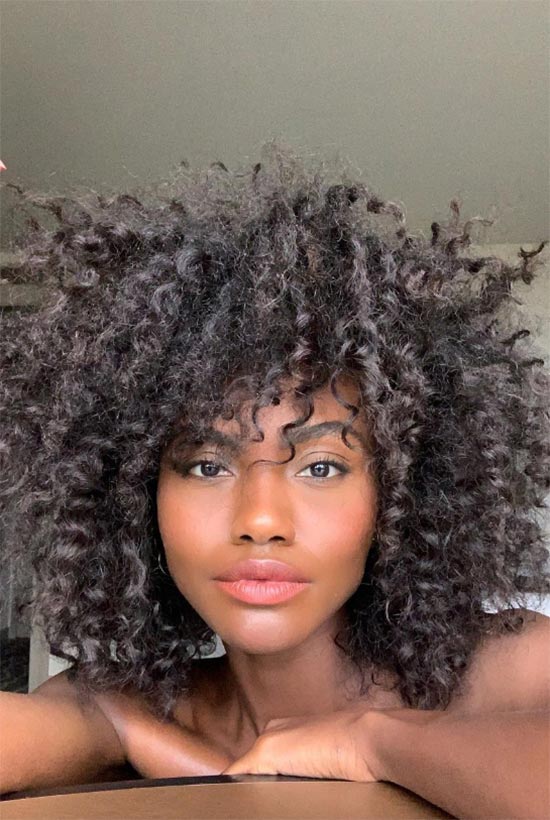
Tips to Keep in Mind
Flexibility Is Key
No two heads of curls are the same. Even if your favorite beauty guru has the same hair type as you, so much goes into whether or not your hair will respond to certain products. Be prepared for a bit of trial and error as you find out which shampoos and conditioners work best for you or even the right wash frequency for your curls.
Moisturize from the Inside
Your hair is already dead. So, there’s only so much you can do externally with conditioners to help your hair. But drinking enough water daily can go a long way towards improving the health of your hair. Studies have found that drinking plenty of water can prevent split ends, correct brittle hair texture, and keep your scalp healthier.
Always Be Gentle
Curly hair is naturally more fragile than straight hair. No matter whether you’re detangling or washing your hair, always be gentle. Ripping through your hair only encourages breakage and tangles.
Photos via @samiorenelda, @iamzoefoster, Instagram

